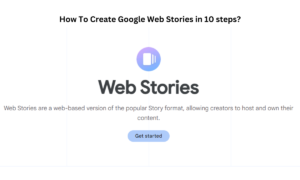Introduction:
The New York Times, with its rich history and esteemed reputation, has established itself as a global media phenomenon. Its journey to popularity is a testament to its unwavering commitment to quality journalism, adaptability to technological advancements, and dedication to delivering accurate and comprehensive news. In this article, we delve into the myriad factors that have contributed to The New York Times‘ remarkable rise to popularity, exploring its legacy, transformation, and continued relevance in the modern media landscape.
A Legacy of Excellence:
The New York Times was founded in 1851 and has since maintained a legacy of excellence in journalism. From its early days, it set the standard for reliable and trustworthy reporting, establishing a reputation for integrity and unbiased coverage. The publication’s steadfast commitment to upholding the truth has earned the respect and loyalty of readers worldwide.
A Wide Range of Coverage:
The New York Times has consistently provided comprehensive coverage across a diverse range of topics. From politics and business to culture, arts, and sports, the publication caters to a wide array of interests. Its extensive coverage ensures that readers can rely on The New York Times as a primary source of information, making it a go-to destination for those seeking in-depth reporting.
Embracing the Digital Age:
Recognizing the transformative impact of the digital age, The New York Times has adeptly navigated the changing media landscape. The publication has made significant investments in its digital platforms, offering readers a seamless and immersive online experience. Its website and mobile applications provide easy access to news articles, features, multimedia content, and interactive storytelling, ensuring that it remains relevant and accessible to a global audience.
Pioneering Journalism Innovations:
The New York Times has consistently embraced innovative storytelling techniques and technological advancements to engage readers. The publication has been at the forefront of incorporating multimedia elements, such as videos, podcasts, and interactive graphics, into its articles. It has also harnessed the power of virtual reality (VR) and augmented reality (AR) to provide readers with unique and immersive experiences, pushing the boundaries of traditional journalism.
Fostering Reader Engagement:
Engagement with its audience has played a crucial role in The New York Times’ popularity. The publication actively encourages reader feedback and dialogue by allowing comments on articles and nurturing an online community. It fosters reader engagement through opinion sections, letters to the editor, and interactive features, cultivating a sense of connection and ensuring that readers feel heard and valued.
International Expansion:
In an era of increasing globalization, The New York Times recognized the importance of expanding its international footprint. The publication has established international bureaus, enabling it to provide comprehensive global coverage. Furthermore, localized editions in various languages have allowed The New York Times to connect with readers around the world, offering news with a global perspective.
Commitment to Investigative Journalism:
The New York Times’ commitment to investigative journalism has significantly contributed to its popularity. The publication has pursued groundbreaking investigative reports, exposing corruption, uncovering hidden truths, and holding those in power accountable. These in-depth investigations have garnered recognition and trust, solidifying The New York Times’ position as a leading source of investigative journalism.
Pros of The New York Times:
- High-Quality Journalism: The New York Times is known for its commitment to high-quality journalism, delivering in-depth and well-researched reporting on a wide range of topics. It maintains rigorous editorial standards and strives to provide accurate and reliable information to its readers.
- Broad Coverage: The publication covers a wide array of subjects, including politics, business, culture, science, and more. Its comprehensive coverage ensures that readers have access to diverse perspectives and a deep understanding of current events and issues.
- Investigative Reporting: The New York Times has a strong tradition of investigative journalism. Its investigative reports have played a crucial role in exposing corruption, uncovering important stories, and holding those in power accountable.
- Global Perspective: With a network of international correspondents, The New York Times offers a global perspective on news. Its coverage extends beyond the United States, providing readers with insights into international affairs, cultures, and global events.
- Multimedia and Interactive Features: The publication embraces multimedia storytelling, incorporating videos, interactive graphics, and immersive features to enhance reader engagement and understanding.
Cons of The New York Times:
- Subscription Model: Access to The New York Times’ digital content is restricted by a paywall, requiring readers to subscribe or pay for access beyond a certain number of free articles. This may limit access to some readers who are unable or unwilling to subscribe.
- Political Bias Perception: The New York Times, like any media organization, faces criticism from individuals who perceive a political bias in its reporting. Some readers believe the publication leans more towards liberal perspectives, while others argue for a conservative bias. This perception can influence readers’ trust in the publication.
- Errors and Corrections: While The New York Times maintains high editorial standards, no organization is immune to errors or inaccuracies. Mistakes can erode trust and impact readers’ perception of the publication’s credibility.
- Limited Regional Focus: The New York Times, being a national and international publication, may not provide as much localized coverage as smaller, regional newspapers. This can be a drawback for readers seeking news specific to their local communities.
- Financial Challenges: Like many traditional media outlets, The New York Times has faced financial challenges in the digital age. This can impact resources available for reporting and potentially lead to changes in staffing or coverage.
It’s important to note that the pros and cons listed above are subjective and based on individual perspectives. Readers’ experiences with The New York Times may vary, and it’s advisable to explore multiple news sources to gain a well-rounded understanding of current events and diverse viewpoints.
Also Read more Story : story views
Conclusion:
The New York Times’ path to popularity can be attributed to its longstanding legacy of excellence, wide-ranging coverage, embrace of the digital age, innovation in storytelling, engagement with readers, international expansion, and dedication to investigative journalism. Its ability to adapt to evolving technologies and maintain its commitment to quality journalism has propelled it to the forefront of global media. As The New York Times continues to evolve and shape the media landscape, its enduring popularity remains a testament to its unwavering dedication to delivering reliable and impactful news to readers around the world.














